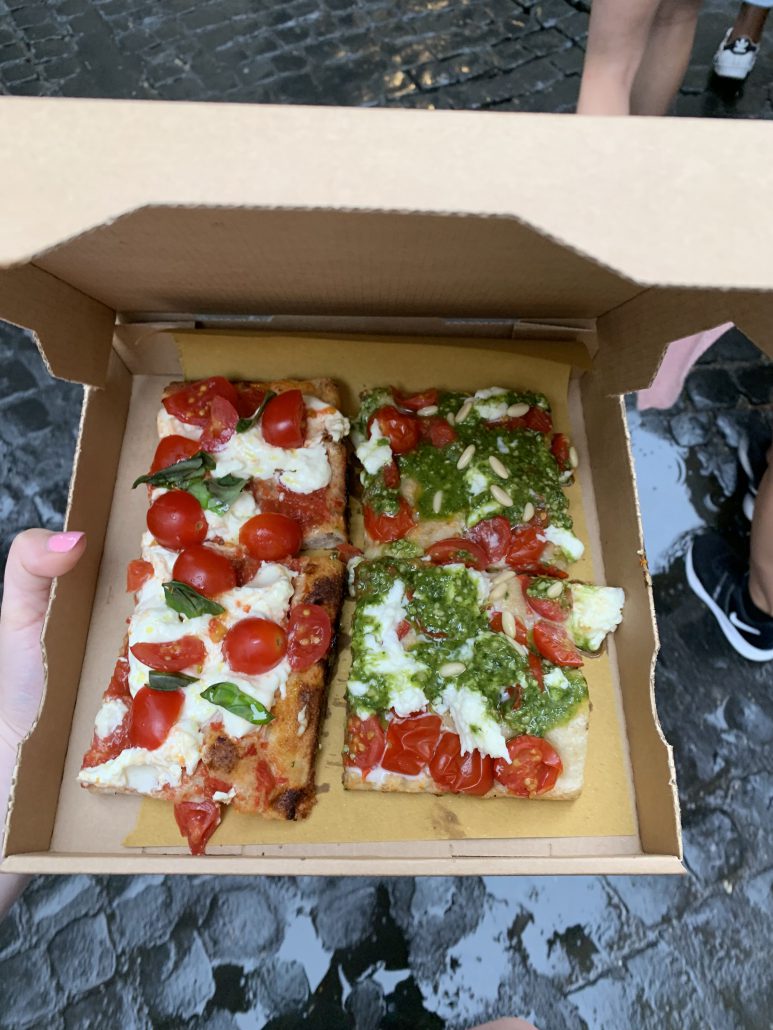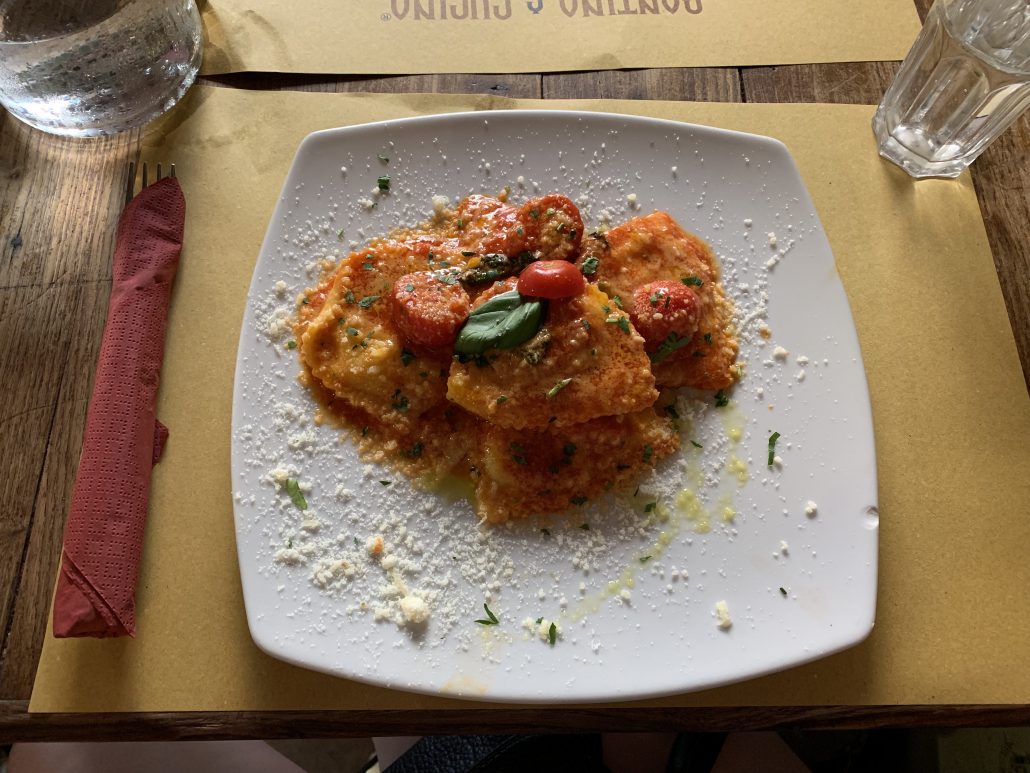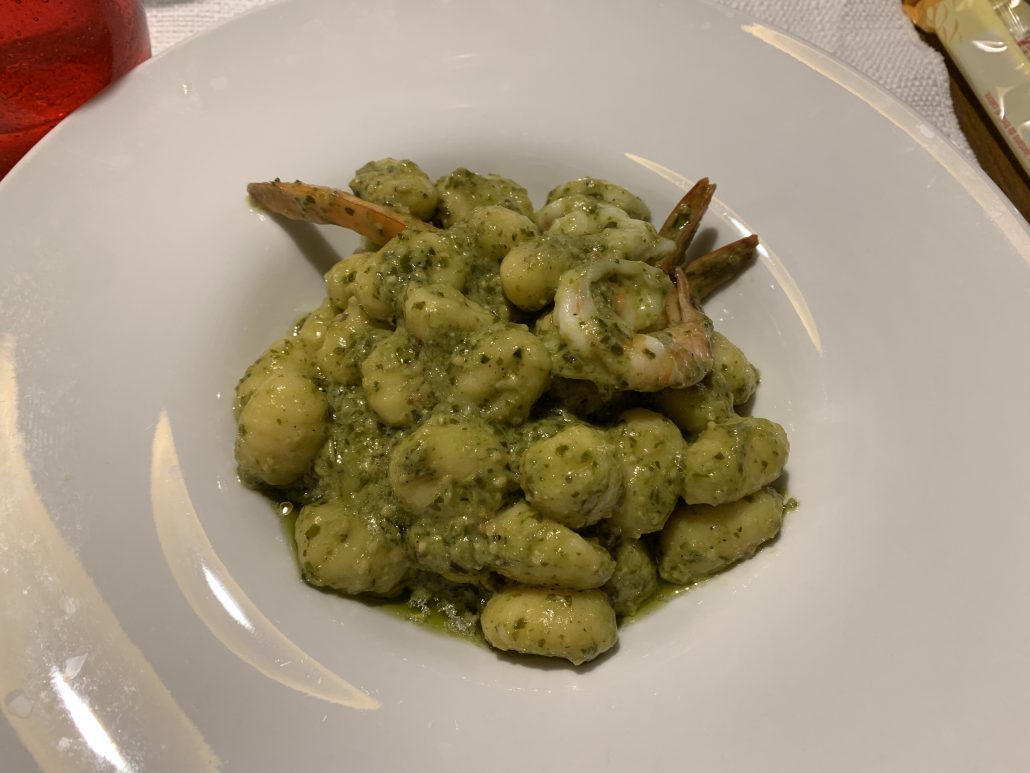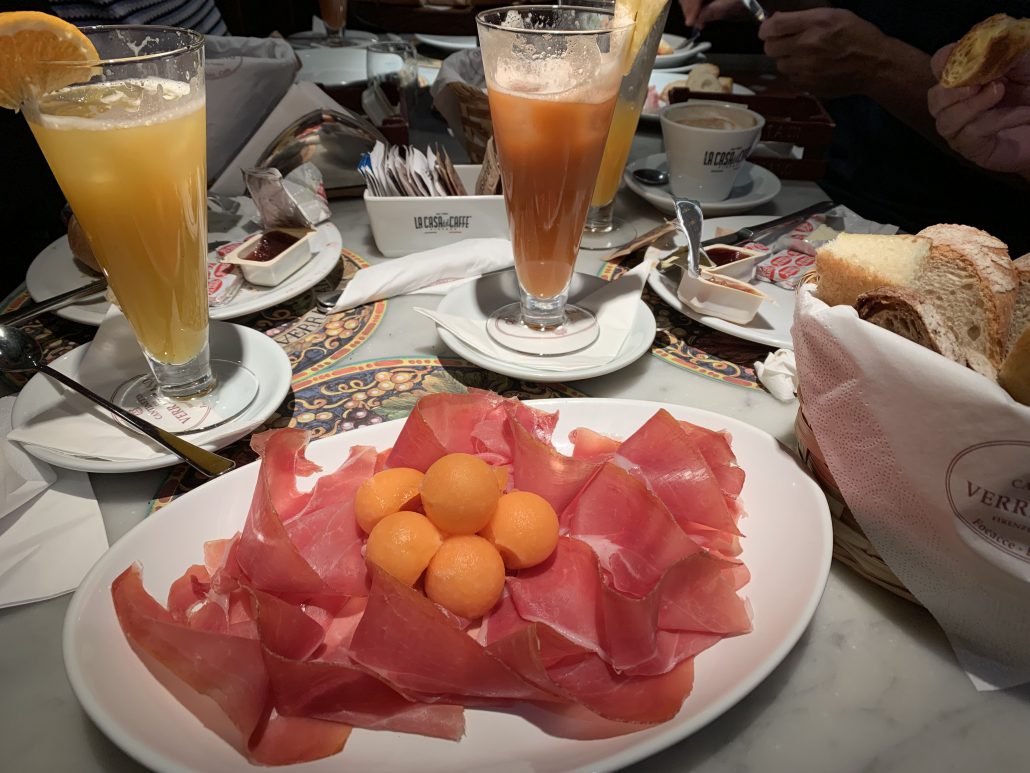By Jessica Helfond
On our first day, our program coordinator told us one VERY important thing to keep in mind while in Rome: food is everything. And let me tell you, he was not kidding. As I’m sure you know, the main food dishes in Italy are pasta and pizza. However, the pizza and pasta in Rome were unlike anything I’d ever tasted before.
There was a small pizza shop a minute down the road from where classes were held, and it was the best pizza I had in Rome. You were able to have them cut the pizza to the size you wanted, and could choose from a wide variety of toppings. It made for a quick, but delicious lunch in between classes.

As a quick sidenote, I would personally recommend pizza with pesto on it. Pesto was one of my favorite foods I tried throughout my time there. And yes, I’ve had pesto before, but none of it even came close to being as delicious as pesto in Italy. It’s made with olive oil, pine nuts, and a variety of herbs. So simple, yet SO good. Pesto is also delicious on pasta. I had it on gnocchi quite often, which is my favorite type of pasta. They’re technically potato dumplings, but they take the place of pasta in most dishes. They are so filling and absolutely delicious, and can even be mixed with meat or fish, like the shrimp I had with my pesto gnocchi.

The ingredients used for all food dishes are unbelievably fresh. The tomatoes are so sweet, the cheese is fresh, and every pasta you find is handmade. There is no shortage of pasta in Rome; in fact, Rome is known for four specific pasta dishes: cacio e pepe, spaghetti alla carbonara, bucatini all’Amatriciana, and pasta alla gricia. I know that none of those names mean anything to you at this point, so let me break it down. Cacio e pepe translates to cheese and pepper, and that’s literally what the dish is. It’s a long noodle with a cheese based sauce and black pepper. It sounds simple, but it’s delicious nonetheless. Spaghetti alla carbonara (often known as just carbonara) is another long noodle dish, made with egg, cheese, some type of ham (often pancetta or bacon), and black pepper. Bucatini all’Amatriciana uses long noodles, this time in a tomato sauce with cheese, black pepper, and pork. Finally, pasta alla gricia is a long noodle with cheese, pork, and pepper. As you can tell, each dish is fairly similar in ingredients; however, the slight variations make for huge differences in flavor. Each dish is delicious, and I would recommend trying each of them to get the full experience of Roman cuisine.

Finally (although I suppose I should be saying firstly), I come to antipasto, or appetizers. My two favorite appetizers were bruschetta and ham with melon (yes, you heard me right). Bruschetta is fresh tomatoes, often mixed with olive oil and herbs on top of toasted bread. Each place you go does their bruschetta slightly differently, so it’s fun to go try all different types. There’s also bruschetta with other types of toppings, like ham and cheese, which I would also recommend trying. And last, but by no means least: ham and melon. I know, the combination sounds so odd. I thought so too when I first heard it. But try it, and believe me, you’ll think the combination is absolutely genius. The sweetness of the cantaloupe melon combined with the saltiness of the prosciutto ham go together so perfectly, it’s unbelievable. Both of these appetizers are so simple, yet are some of the most delicious food I had while in Rome.

When in Rome, I encourage you to go out of your comfort zone and try the local cuisine. It is some of the best food I have ever tasted; you will never be disappointed with a meal. And remember: Food. Is. Everything.

Jessica Helfond studied abroad in Rome in Summer 2019. https://ieo.ucla.edu/travelstudy/italian-rome/



